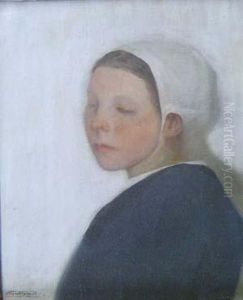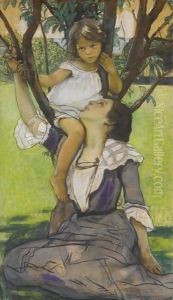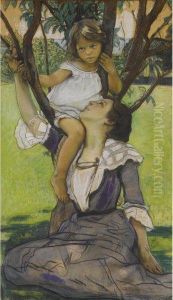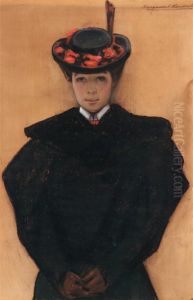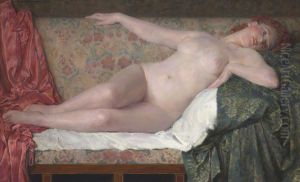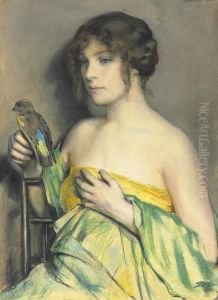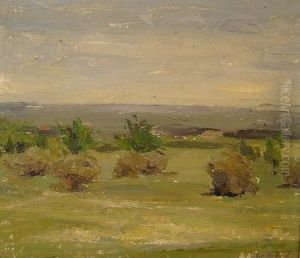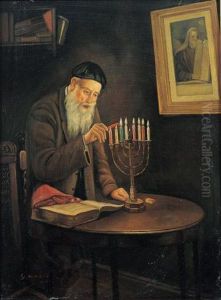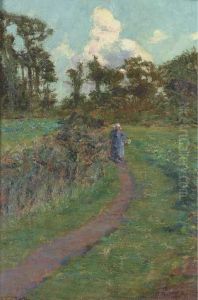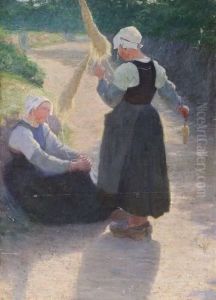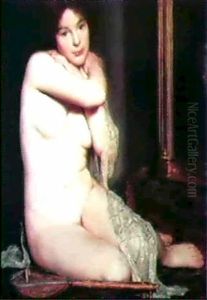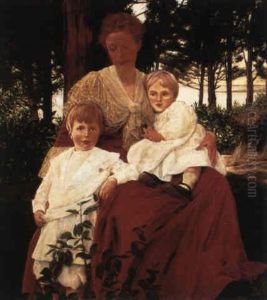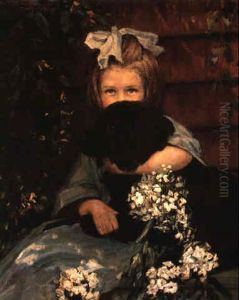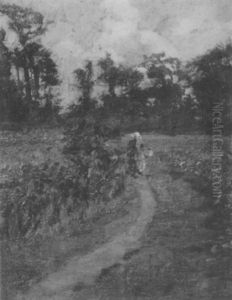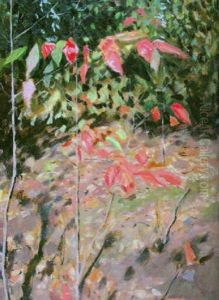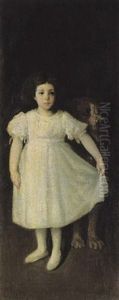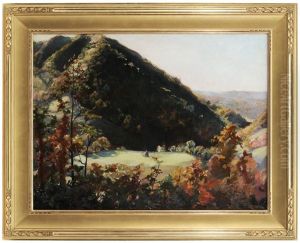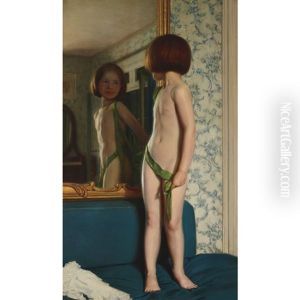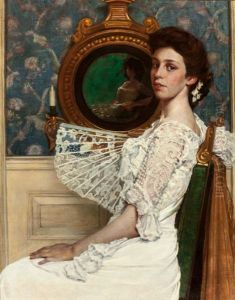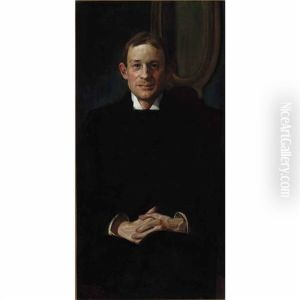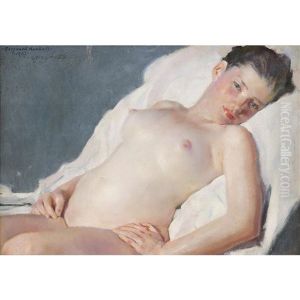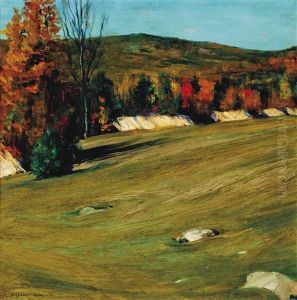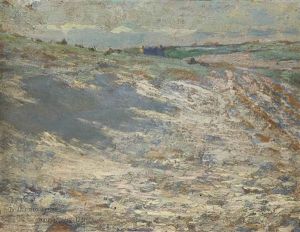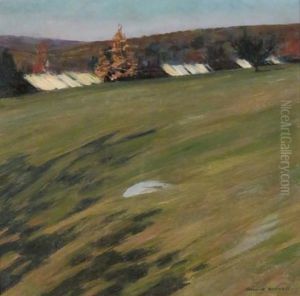William Sergeant Kendall Paintings
William Sergeant Kendall was an American painter and educator, known for his evocative figural works, particularly those depicting his family. Born on January 20, 1869, in Spuyten Duyvil, New York, Kendall showed an early interest in art and pursued formal education in the field. He studied at the Cooper Union School of Design for Women and later at the Art Students League of New York. His talents were further honed at the Académie Julian in Paris under the tutelage of notable artists such as Gustave Boulanger and Jules Joseph Lefebvre.
Kendall's work was heavily influenced by the academic tradition and often featured soft, muted color palettes and a sensitive handling of light and shadow. He was particularly adept at capturing the subtleties of the human form, which is evident in his many portraits and domestic scenes. His paintings often included his wife Margaret Weston Stickney Kendall and their three daughters, who served as his muses and frequent subjects.
Throughout his career, Kendall achieved significant recognition. He was awarded the Thomas B. Clarke prize by the National Academy of Design in 1891 and became an associate of the academy in 1901. By 1905, he was a full academician. His work was also exhibited in Europe and at the 1913 Armory Show in New York City, an event that introduced many Americans to modern European art.
In addition to his painting career, Kendall was a dedicated educator. He served as a professor at the Cooper Union and later held a position at the Yale School of Fine Arts, where he became the director from 1913 to 1922. His teaching influenced a generation of artists and his emphasis on sound academic principles was a hallmark of his pedagogy.
Kendall's later years saw him continue to paint while also dealing with personal challenges, including the end of his marriage. He eventually moved to Hot Springs, Virginia, where he lived until his death on February 16, 1938. His legacy is preserved in the collections of various institutions, including the Metropolitan Museum of Art and the Smithsonian American Art Museum.
